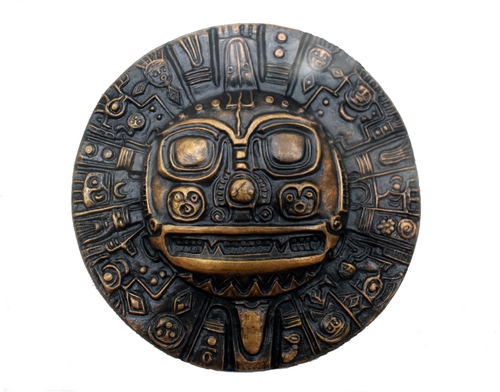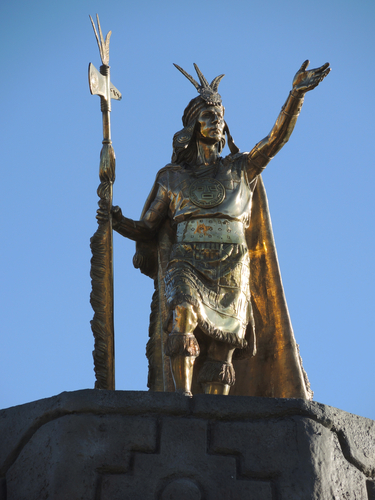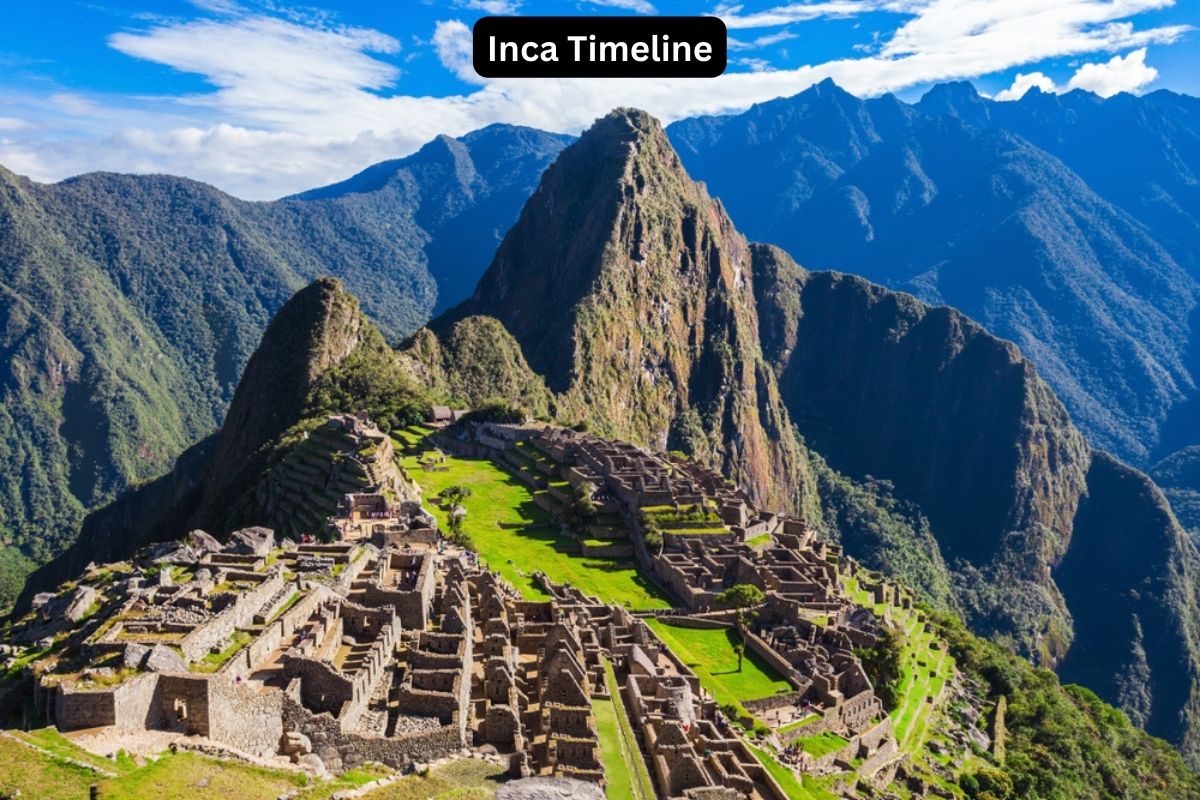The Inca Empire, known as Tawantinsuyu, was the largest empire in pre-Columbian America. Centered in the Andean region of South America, it extended across parts of present-day Peru, Chile, Ecuador, Bolivia, Argentina, and Colombia.
The civilization rose to prominence in the 15th century under the leadership of Pachacuti, who expanded the small kingdom of Cusco into an expansive empire.
The Incas developed a complex societal structure with a centralized administration based in Cusco, the capital. They are notable for their extensive road network, remarkable architecture, including the famous Machu Picchu, and their quipu system of recording information.
However, the arrival of Spanish conquistadors in the 16th century led to the rapid downfall of the Inca Empire. Internal strife, disease, and the superior weaponry of the Spaniards facilitated the empire’s demise. Despite its collapse, the Inca Empire left a lasting cultural and architectural legacy in South America.
| Year | Event |
|---|---|
| 1200 AD | The Inca civilization is believed to have originated, with its first city, Cusco, founded. |
| 1438 AD | Pachacuti becomes leader, begins expansion of territory and reorganizes the kingdom into an empire. |
| 1463 AD | Pachacuti’s son, Topa Inca Yupanqui, takes over and continues expanding the empire. |
| 1493 AD | Huayna Capac becomes the Inca ruler and continues the expansion policy. |
| 1525 AD | Death of Huayna Capac leads to a civil war for succession between his sons, Huáscar and Atahualpa. |
| 1532 AD | Atahualpa becomes ruler after defeating Huáscar. Francisco Pizarro arrives and captures Atahualpa. |
| 1533 AD | The Spanish execute Atahualpa, effectively ending the main line of Inca royalty. |
| 1533-1572 AD | The Spanish continue their conquest, fighting against the remnants of the Inca resistance. |
| 1572 AD | The last Inca stronghold, Vilcabamba, falls to the Spanish. Last ruler, Tupac Amaru, is executed. |
Timeline of the Incas
1200 AD – Inca civilization originates with its first city, Cusco, founded
The Inca civilization is believed to have originated around the year 1200 AD, in the area that is modern-day Peru. Their first city, Cusco, was founded around this time. According to Incan mythology, the city was built by Manco Capac, who was the first king of the Inca dynasty.
Also Read: Inca Accomplishments
Cusco would become the political, military, and cultural center of the empire, hosting the royal court and serving as the main hub for the Inca’s extensive road network.

1438 AD – Pachacuti becomes leader and begins expansion
In 1438 AD, a prince named Pachacuti launched a campaign against the powerful regional state of the Chancas, which threatened the existence of the Cusco state.
Also Read: Aztec Empire Facts
After emerging victorious, Pachacuti became the ruler and began an ambitious program of political, military, and cultural expansion, transforming the kingdom of Cusco into an empire known as the Tahuantinsuyu, which means “realm of the four parts”.
The Inca Empire under Pachacuti also saw major advances in architecture, agriculture, and education.
1463 AD – Topa Inca Yupanqui, Pachacuti’s son, continues expansion
Following Pachacuti’s death, his son Topa Inca Yupanqui ascended to the throne around 1463 AD. He continued his father’s expansionist policies and extended the empire as far south as modern-day Chile and Argentina and as far north as Ecuador and Colombia.
Topa Inca Yupanqui is also known for consolidating the administrative structure of the empire, and for encouraging the worship of the sun, a central feature of Inca religion.
1493 AD – Huayna Capac becomes ruler, continues expansion
Following Topa Inca Yupanqui’s death, his son Huayna Capac ascended the throne around 1493 AD. During his reign, he further expanded the empire to the north, reaching modern-day Ecuador and southern Colombia.
Huayna Capac also worked on consolidating the administrative control over the empire, organizing the vast territory into four provinces.
His reign is often considered the height of the Inca Empire’s power and glory, marked by relative peace, massive building projects, and the development of a complex state bureaucracy.

1525 AD – Huayna Capac dies, civil war for succession between Huáscar and Atahualpa
Huayna Capac died in 1525 AD, and his death led to a succession crisis. His eldest son and presumed heir, Ninan Cuyuchi, had also died, possibly from smallpox, a disease brought to the region by Europeans.
This left two potential successors: Huáscar, based in Cusco, and Atahualpa, who was in Quito with the northern armies at the time of their father’s death. This led to a civil war between the half-brothers, with factions of the empire backing one or the other.
1532 AD – Atahualpa defeats Huáscar, becomes ruler; Francisco Pizarro arrives and captures Atahualpa
In 1532 AD, Atahualpa emerged victorious from the civil war, but his reign was immediately threatened by the arrival of Spanish conquistadors led by Francisco Pizarro. Pizarro and a small force of about 180 men managed to capture Atahualpa during the Battle of Cajamarca.
Despite a ransom of a room filled with gold and twice over with silver paid by the Incas, the Spanish executed Atahualpa in 1533, effectively ending the main line of Inca royalty and precipitating the fall of the Inca Empire.
1533 AD – Spanish execute Atahualpa, ending main line of Inca royalty
The execution of Atahualpa by the Spanish in 1533 AD was a crucial blow to the Inca Empire. Atahualpa was killed on charges of plotting against the Spanish despite the large ransom paid for his release.
This marked the end of the main line of Inca royalty. The Spanish, led by Pizarro, then took control of Cusco, the heart of the Inca Empire, leading to further disruption and chaos.
1533-1572 AD – Spanish continue conquest against remnants of Inca resistance
After the capture of Cusco, the Spanish continued to face resistance from portions of the Inca Empire. Many of the surviving royals and their followers retreated into the remote jungles and highlands of Vilcabamba to the west of Cusco, which became the center of Inca resistance against the Spanish.
Here, they established a Neo-Inca State, which lasted for almost 40 years. During this time, several Inca rulers, including Manco Inca Yupanqui and his sons, led the fight against Spanish control.
1572 AD – Last Inca stronghold, Vilcabamba, falls; last ruler, Tupac Amaru, is executed
In 1572, the Spanish, under Viceroy Francisco de Toledo, launched a final campaign against the remaining Incas in Vilcabamba. The last Inca ruler, Tupac Amaru, was captured and brought to Cusco, where he was tried and executed by the Spanish.
The fall of Vilcabamba and the death of Tupac Amaru marked the end of the Inca Empire and the consolidation of Spanish control over the region, paving the way for the Colony of Peru.
